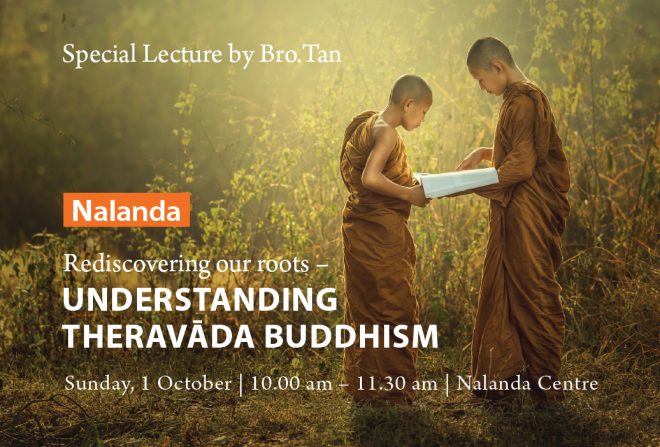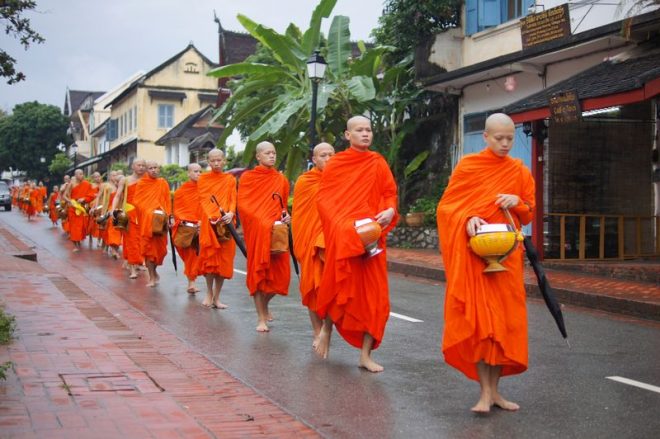Lecture on Theravāda Buddhism
Lecture on Theravāda Buddhism
Theravāda is one of the two major branches of Buddhism in the world today (the other being Mahāyana). The Pāli term ‘Theravāda’ means “doctrine of the elders”, as this school of thought can trace its origins from the time of Emperor Asoka Moriya twenty-three centuries ago, making it the oldest existing Buddhist sect.
Theravāda Buddhism is predominantly practised in Southeast Asian countries of Thailand, Myanmar, Laos, Cambodia, and Sri Lanka. In Malaysia and Singapore, it forms a significant minority of Buddhist devotees. Although Theravāda shares many common doctrines with other branches of Buddhism, it is nevertheless unique in having a long unbroken monastic lineage stretching back to the Buddha’s lifetime, as well as having clearly defined canonical texts.
Besides these, what other significant features distinguish Theravāda from the other schools? Nalanda founder Bro.Tan will deliver a special lecture on “Understanding Theravāda Buddhism” on Sunday 1 October, at Nalanda Centre. He is an acknowledged speaker on the subject, and the former Advisor to the Theravāda Buddhist Council of Malaysia. We welcome everyone to attend the talk this weekend to learn more about this ancient lineage.



